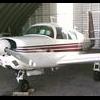Running a tank dry in flight
-
Members Online
- AMG880
- 802flyer
- Nico1
- Z W
- dzeleski
- raymondscott0321
- Rick Junkin
- Hank
- 201er
- bixmooney
- eman1200
- LANCECASPER
- Flyler
- tony
- DXB
- Bob Weber
- 65MooneyPilot
- Schllc
- jsimmons619
- Blackroc
- ArtVandelay
- bigmo
- jcovington
- Danb
- midlifeflyer
- 201Steve
- Wingfree
- hoot777
- christaylor302
- Brandt
- MoonFlyer68
- Rsmithref
- Matthew P
- Oscar Avalle


Recommended Posts
Join the conversation
You can post now and register later. If you have an account, sign in now to post with your account.